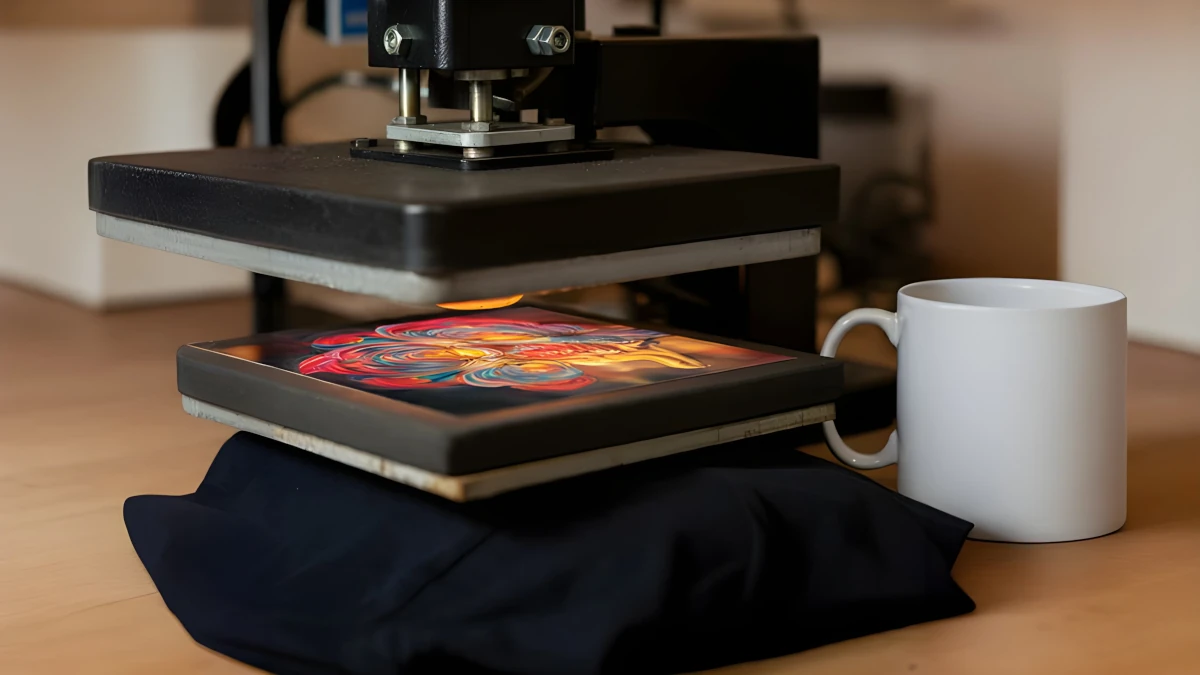Sublimation is an interesting process with many applications, especially in printing and product customization. So, what is sublimation? It is essentially a way for a solid to change directly to a gas without going through the liquid phase. This sounds like complicated chemistry, but the applications are simple and very useful.
Take dry ice, for example – it is solid carbon dioxide. At room temperature, it doesn’t melt into a fluid. It becomes a gas directly. This is sublimation at work!
Now, how does this apply to printing and customization? Let’s dive in.
Sublimation Printing: A Deep Dive
This scientific principle is applied to sublimation printing to produce vivid, long-lasting designs in various materials. Here is the way the process works:
- Design Creation: A design is created digitally using graphic design software.
- Printing: The design is printed on special sublimation paper with sublimation ink. These inks contain special dyes that solidify in the room but become gas when heated.
- Heat Transfer: The printed paper is then placed on the substrate – the customized item, such as a mug, T-shirt, or phone case. Both are then heated to high temperature and pressure in a heat press.
- Magic Happens: The heat evaporates the sublimation dye into the substrate surface. The dyes solidify again as the substrate cools and becomes part of it.
The finished full-color print is fade, crack, peel-resistant, and very durable. Inks used for sublimation are applied directly to the substrate versus conventional printing, where the content is layered in addition to the material. This creates a smooth surface and is quite long-lasting.
Advantages of Sublimation
- Durability: The prints which are printed by sublimation are durable and durable. They won’t crack, peel, or fade, which makes them perfect for items that go through regular use.
- Colors with Vibrant Colors: The result is a spectacular high-resolution print due to the sublimation that allows for a broad range of detailed and vibrant colors.
- Versatility: You can use this technique on various materials and ceramics, including metals, polyester, and other things.
- Customization: Its capability to make customized designs and intricate details makes sublimation a fantastic choice for creating truly unique products.
Limitations of Sublimation
Sublimation printing utilizes the principle of sublimation to create vibrant and durable designs on different materials. The process involves applying inks directly to the substrate, resulting in fade, crack, and peel-resistant prints. While sublimation offers numerous advantages, it’s important to note its limitations.
- Fabric Restrictions Apply: It’s advisable to use sublimation on polymer-coated fabrics and polyester garments with a high percentage of polyester. Cotton and other natural fibers cannot soak up the dyes.
- Matching of Colors: With sublimation, it can be difficult to achieve exact color matching since the final color depends on the substrate and the inks used.
- Substrates with Light Colors: As sublimation inks are clear, they’re best utilized on white or light-colored substrates. Dark-colored paper substrates could impact the vibrancy of any print.
Applications of Sublimation
Sublimation printing utilizes the principle of sublimation to create vibrant and durable designs on various materials. The process involves directly applying inks to the substrate, resulting in fade, crack, and peel-resistant prints. Sublimation printing finds wide-ranging applications across various industries.
- Promotional Products: Sublimation could be used to make branded merchandise for almost anything, from key chains and phone cases to pens and mugs.
- Apparel and Fashion: The sublimation technology enables you to make brilliant designs on tees, sportswear, and trendy accessories.
- House Decor: Decor items like ceramic tiles, photo panels, and cushions may be made personalized with sublimation.
- Printing with Photos: Using sublimation technology, you can create long-lasting memories by printing high-quality photographs on different materials.
Sublimation is an excellent option for anybody who wants a flexible and top-quality printing technique for personal or business projects. Its capability to make vibrant prints that are long-lasting and beautiful makes it a preferred option for various uses.
Interested in traditional printing methods like screen printing? You can learn more about it in our article on screen printing.
You can get more details about sublimation by reading through the extensive guide which is offered on what is sublimation.
Conclusion
There are a lot of advantages that can be obtained from sublimation, a flexible and powerful printing method. By knowing its fundamentals, applications, and limitations, you can use this technology to make stunning, customized products that stand the test of time.
Call us at Logo Depot at 316-264-2871 for more information or assistance.
